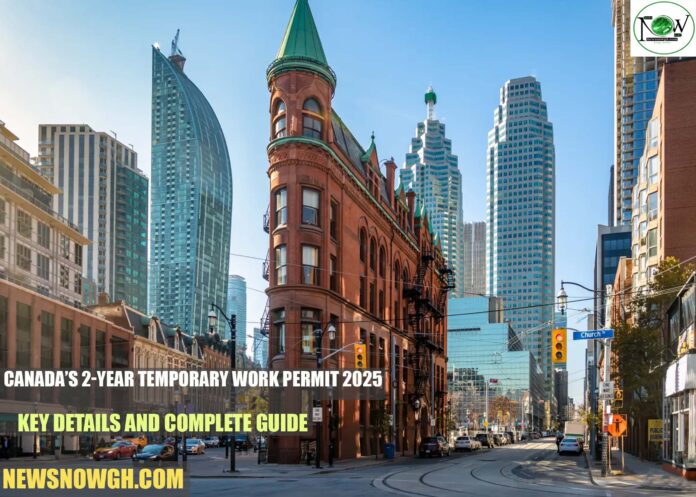Canada’s 2-Year Temporary Work Permit 2025: Key Details and Complete Guide
Canada offers various types of work permits, each with the potential for a two-year validity. Understanding these options is crucial for anyone looking to work in Canada. This guide outlines the most common permits, eligibility criteria, application processes, and key considerations for 2025.
Types of Work Permits Valid for Up to 2 Years
Several categories allow for a two-year work permit. Here’s a quick overview of each:
| Permit Type | Typical Maximum Validity | Who It’s For |
| IEC — Working Holiday | 1–2 years (varies by country) | Young individuals from participating countries (ages vary). |
| Post-Graduation Work Permit (PGWP) | Up to 3 years; some get 1–2 years | Recent graduates from eligible Canadian institutions. |
| Employer-Specific Work Permit (LMIA) | Duration requested by employer (up to 2 years) | Foreign nationals with a job offer and often a positive LMIA. |
| Open Work Permits | Up to 2 years (varies by policy) | Spouses of eligible workers/students or applicants under specific public policies. |
Eligibility Criteria for a 2-Year Permit
Eligibility requirements depend on the specific program. Generally, applicants should meet these criteria:
- IEC Working Holiday: Must be a national of a participating country, typically aged 18–35, and meet medical and financial standards.
- PGWP: Graduate from an eligible program at a designated institution; must apply within 180 days of graduation and maintain study status.
- Employer-Specific Permit (LMIA): Requires a valid job offer, LMIA submission by the employer, and passing medical/security checks. Compliance with employer regulations is also necessary.
- Open Permits: Eligibility hinges on the primary partner’s status or specific public policies. Note that rules for spouses and certain open permits have tightened recently, so review the latest guidelines.
Required Documents
When applying, you will need to gather several important documents:
- A valid passport (recommended to have at least six months remaining)
- Job offer letter and employer details or LMIA decision (if applicable)
- Proof of funds for IEC or initial entry
- Educational credentials and transcripts for PGWP
- Police certificates and medical exams (if required)
- Biometrics receipt (often required by IRCC)
Step-by-Step Application Process
Applying from Outside Canada
- Determine which work permit you need (open vs. employer-specific).
- Collect required documents and complete the appropriate form (IMM 1295 for many applications).
- Pay your fees and submit your application online (paper applications are available upon request).
- Provide biometrics and await a decision. If approved, you will receive instructions regarding visa and Port of Entry (POE) procedures.
Applying from Inside Canada
Most initial work permits now require online applications; IRCC has moved away from POE processing. Follow IRCC’s detailed instructions, as some extensions require specific documentation.
Processing Times and Common Delays in 2025
Processing times vary depending on the permit type, the country of application, and the IRCC workload. Check IRCC’s processing-time tool before applying.
Backlogs and extended wait times have occurred in multiple permit categories between 2024 and 2025. To avoid delays, ensure your application is complete and submit your biometrics promptly. In certain expedited streams, such as the Global Skills Strategy, eligible applications may be processed in about two weeks.
Conclusion
Navigating Canada’s work permit landscape in 2025 can be complex, but understanding your options and requirements is essential. Whether you’re a young traveler or a recent graduate, the right permit can open doors to new opportunities in Canada.
Stay informed, prepare your documents carefully, and follow the application process to maximize your chances of success.
Follow NewsNowGh to stay updated on the latest information regarding work permits, visas, and visa-sponsored employment.


